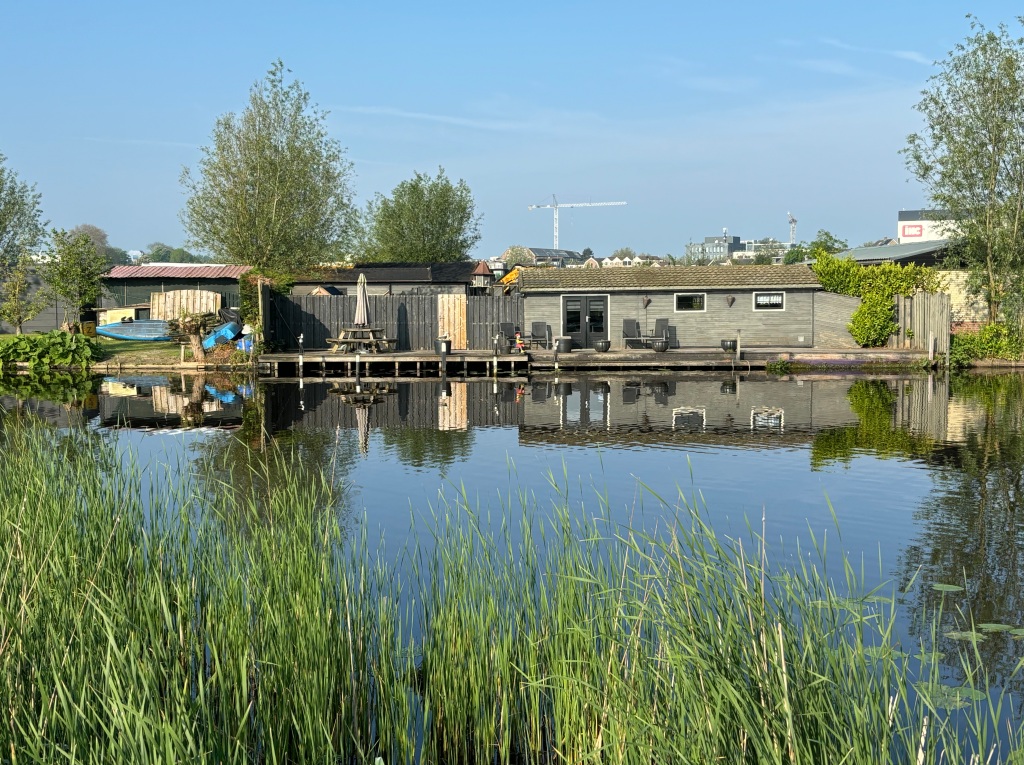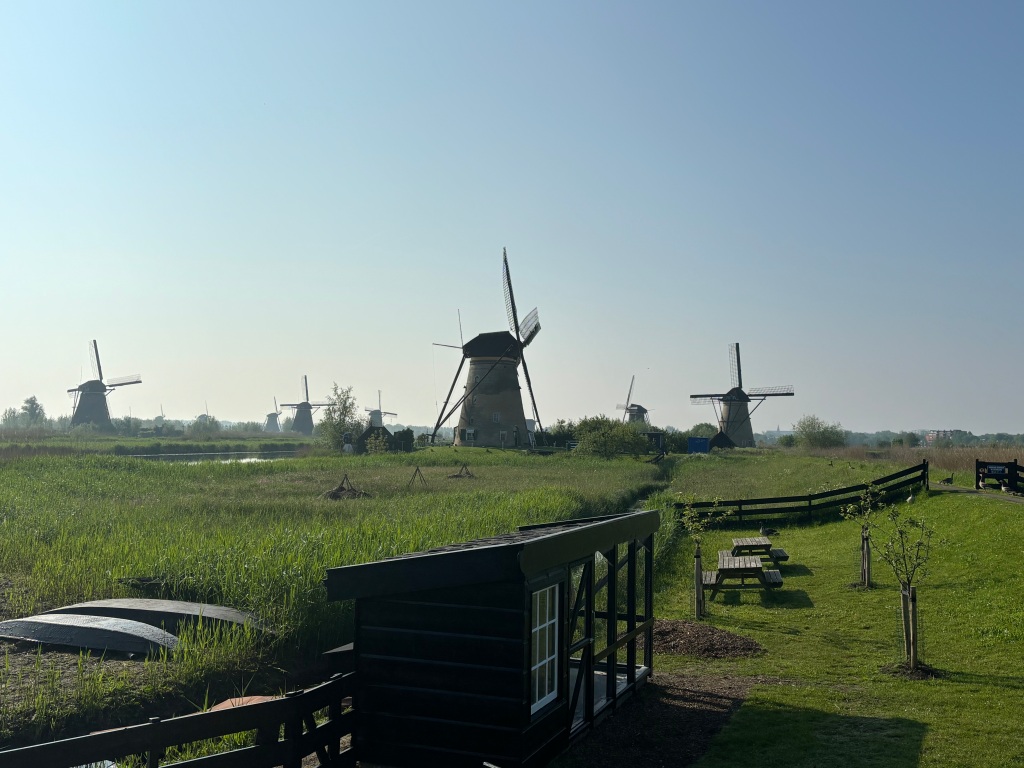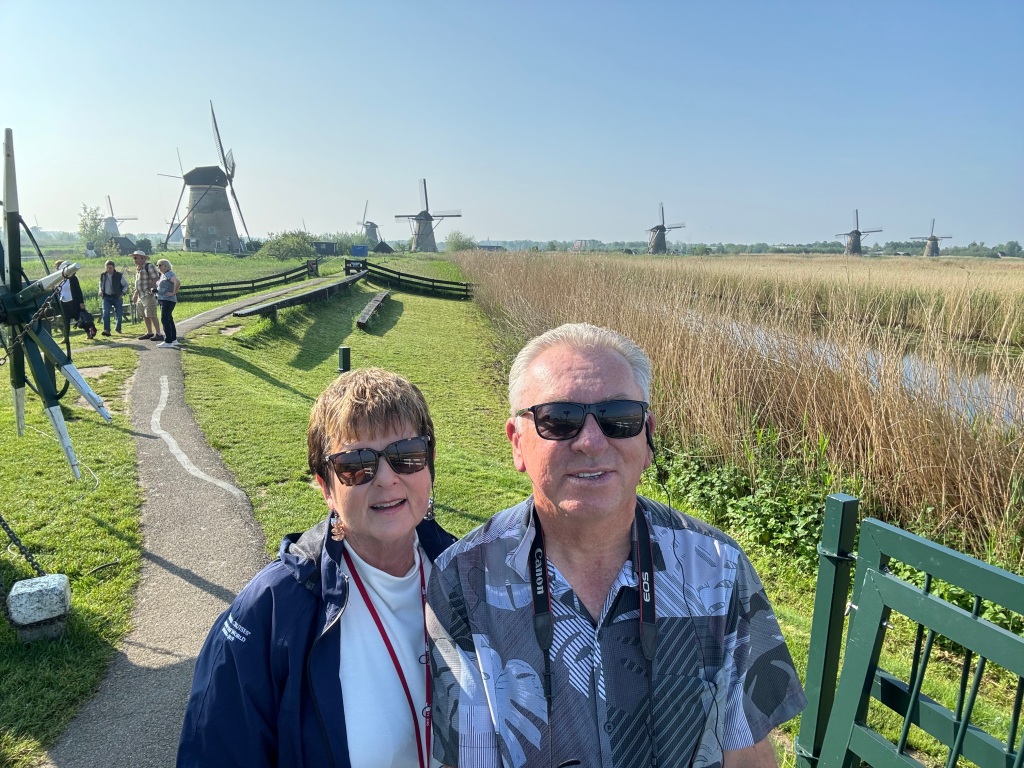May 9, 2024
Today we are in the UNESCO World Heritage site of Kinderdijk (pronounced kinder dike), most known for its 19 well-preserved 18th-Century windmills. Many are so well- preserved people actually live in them!
Windmills are typically defined as “an apparatus that harnesses wind power for a variety of uses, e.g. pumping water and driving electrical generators.” The windmills we visited today were built to manage water levels for the town of Kinderdijk and its surrounding communities. As we’ve noted in earlier posts, most of the Netherlands is below sea level. The first layer of ground is peat, very soft and soggy and impossible to do much with. Early settlers built a dike to keep the waters at bay so the land would dry out a bit and they could farm the fertile soil. The windmills were built to manage the waterways on the other side of the dike.
Trivia Time! What’s the difference between a dike and a dam? A dike has water on only one side and is built to keep water out; a dam has water on both sides and is built to manage the flow of that water. Dikes protect land from flooding; dams retain water.
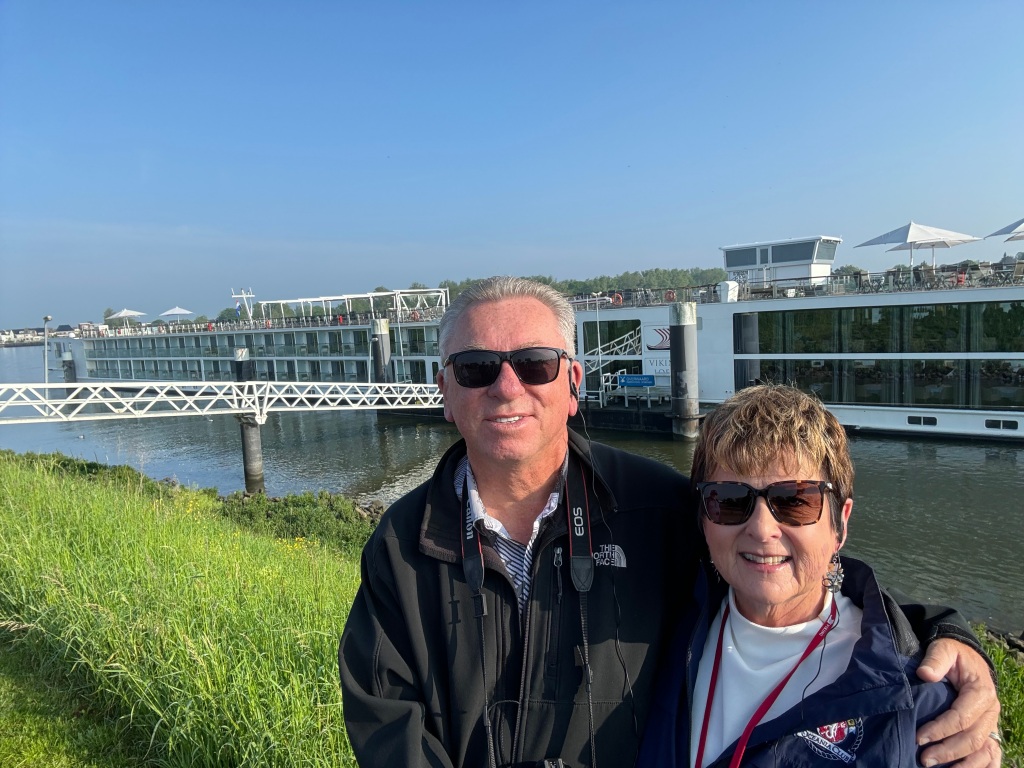
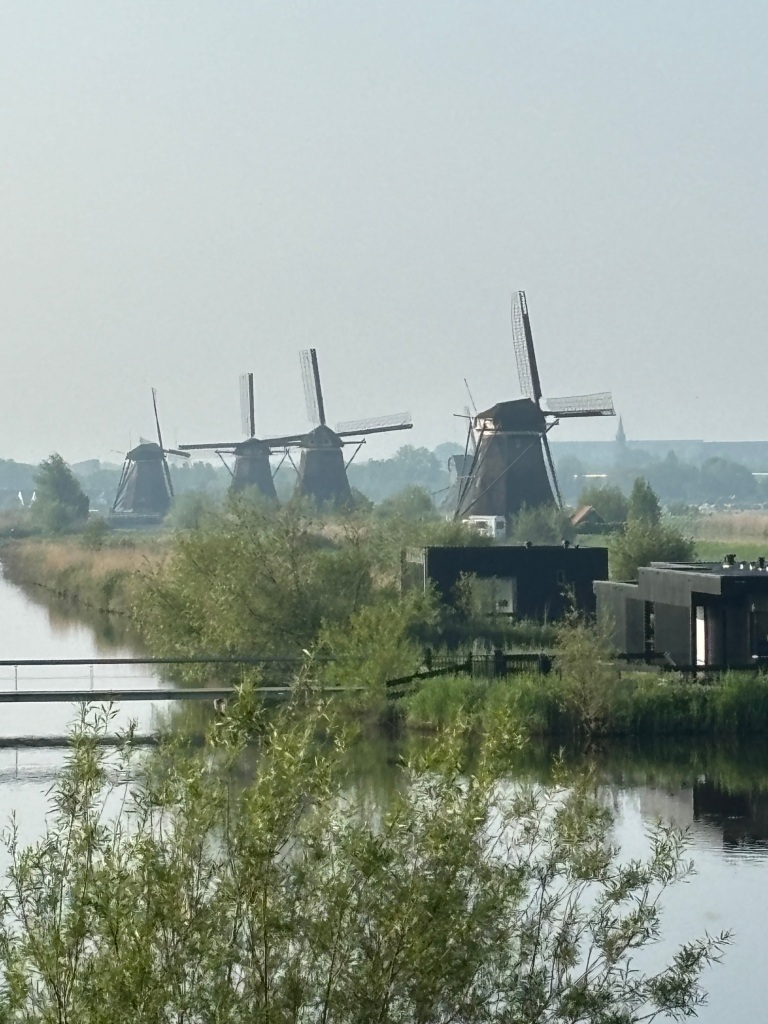
Our weather today is perfect! Low 50’s and lots of beautiful sunshine. Ken was able to get a great picture of the old pumping station reflecting off the canal. The new pumping station was not sexy enough to warrant a picture, but it operates on diesel and electrical power and requires no manual intervention. Everything is handled by technology; water levels are monitored, stations in the area communicate with one another, and water is removed or pumped in as needed
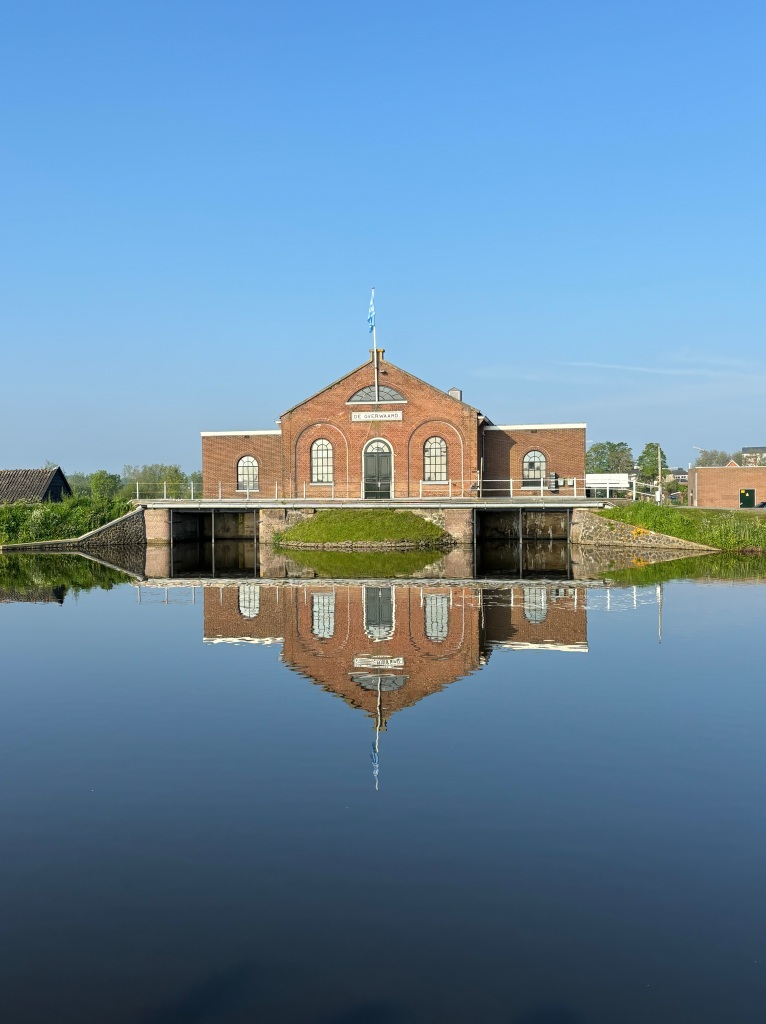
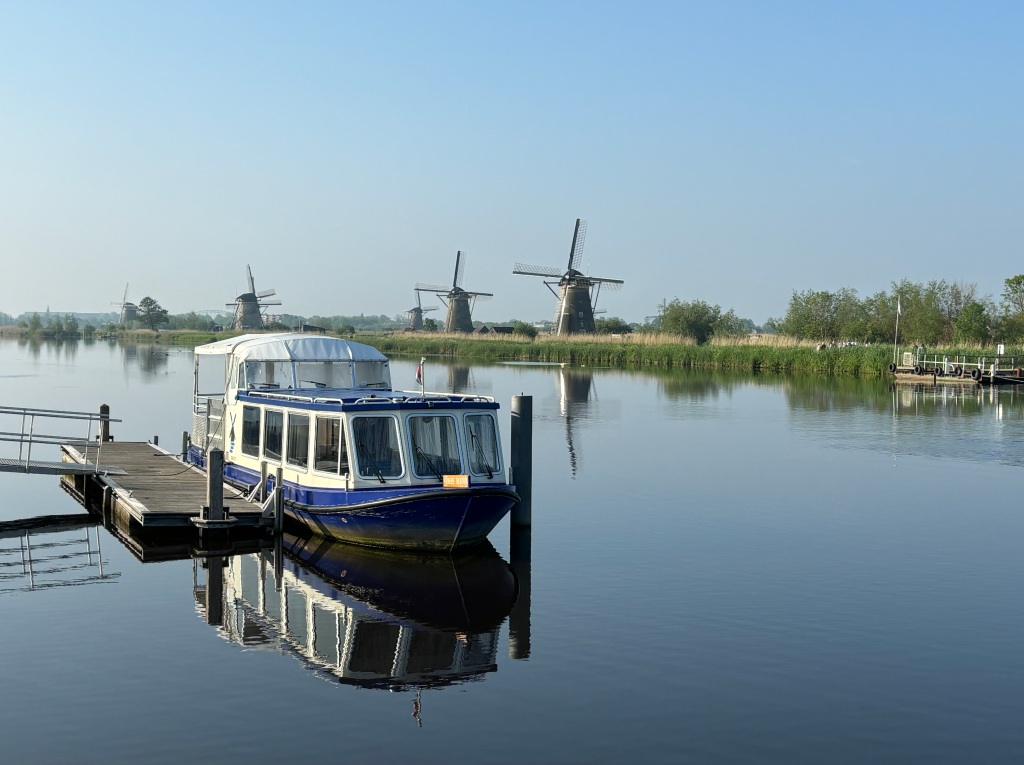
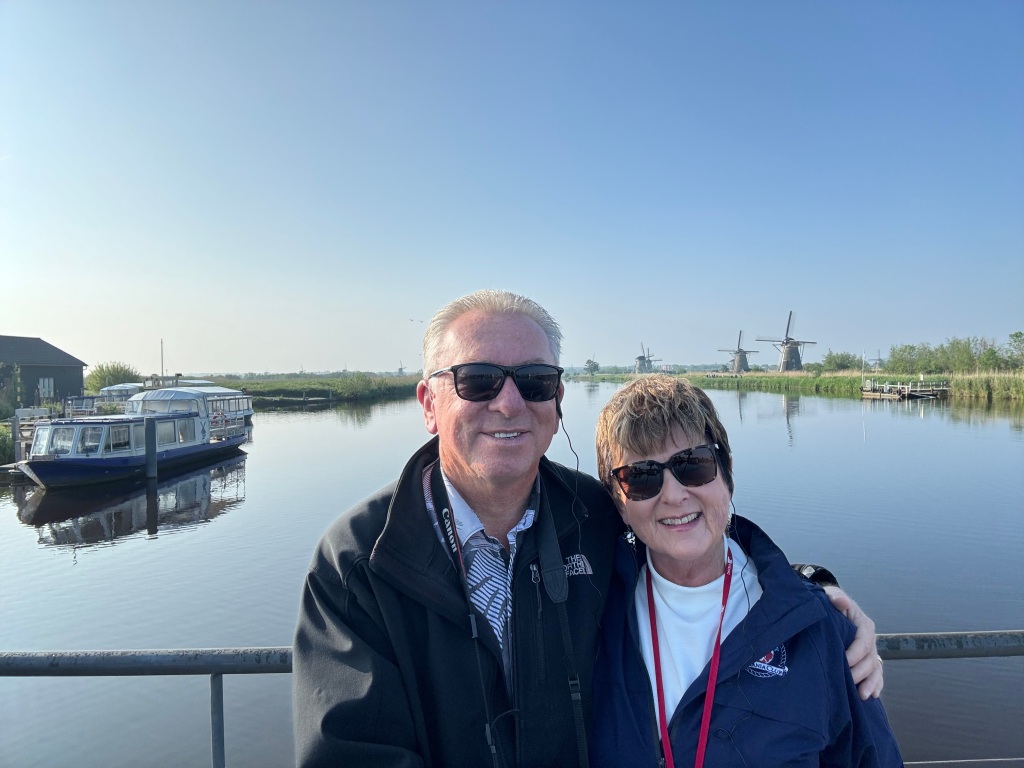
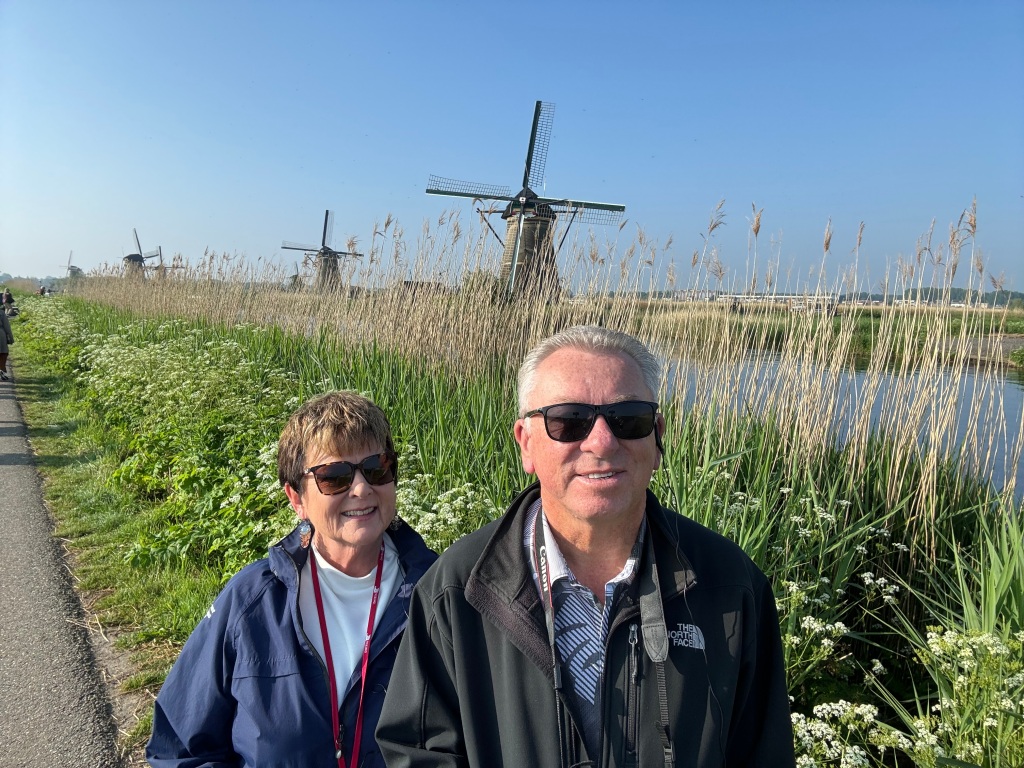
The windmills were built at different times. The first group of 8 was built in 1738 and are made of stone. Another group of 8 was built in 1740 and are constructed of wood.
Regardless of their construction they use water wheels to “push” the water into scoops, or large buckets, that then deposit it into a higher body of water.
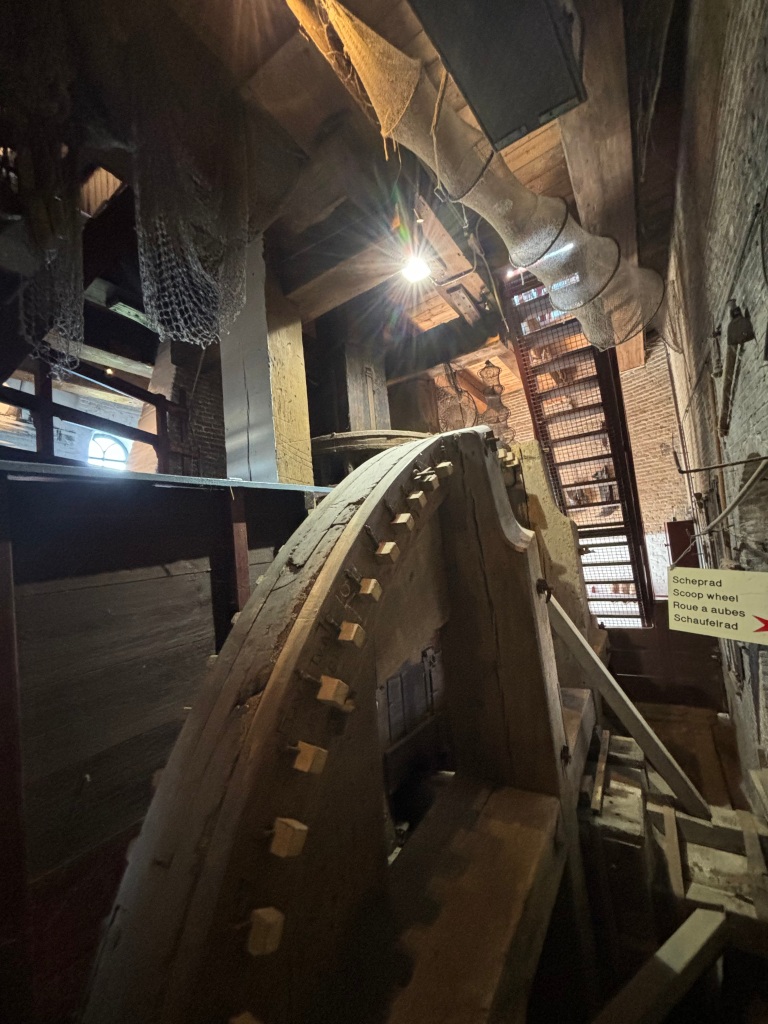
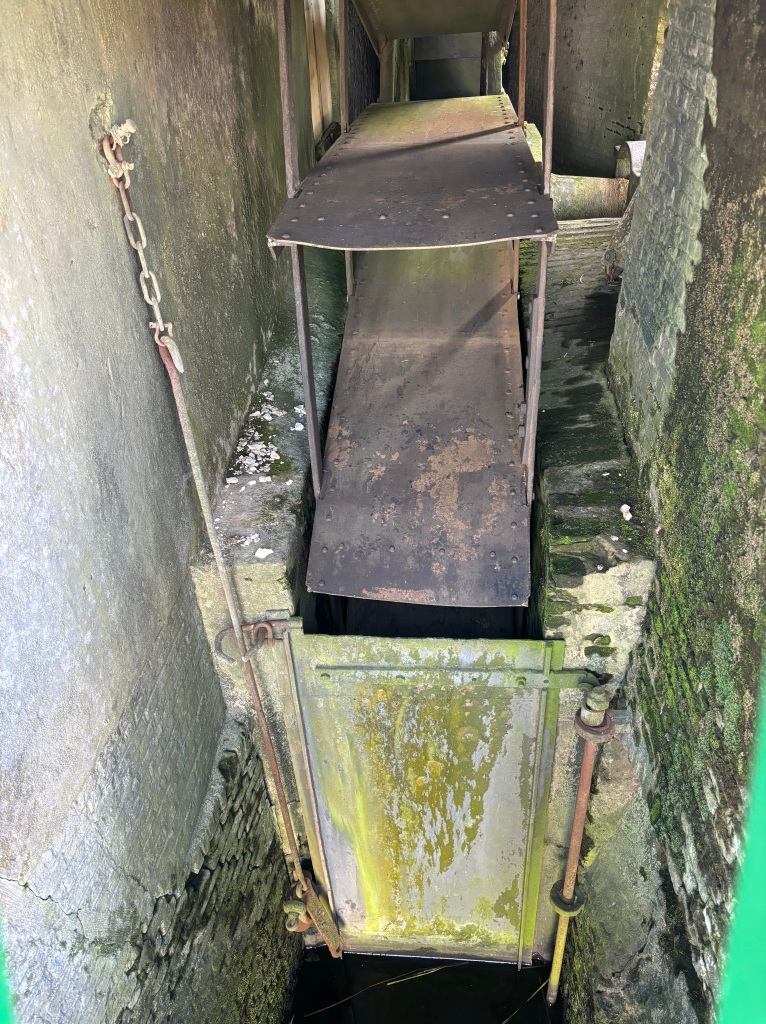
In the old days millers ran the windmills for a small salary. The average family in those days had seven children. The miller, his wife, and all of those seven children lived in the windmill.
Here is the entry way and first floor of the home.

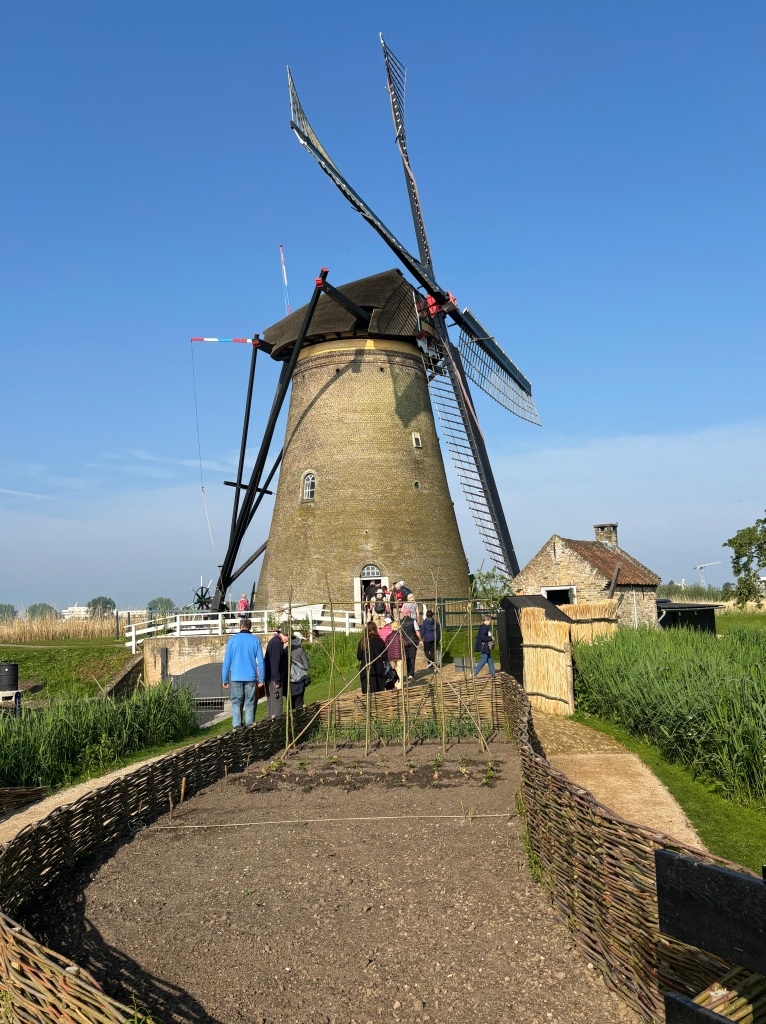
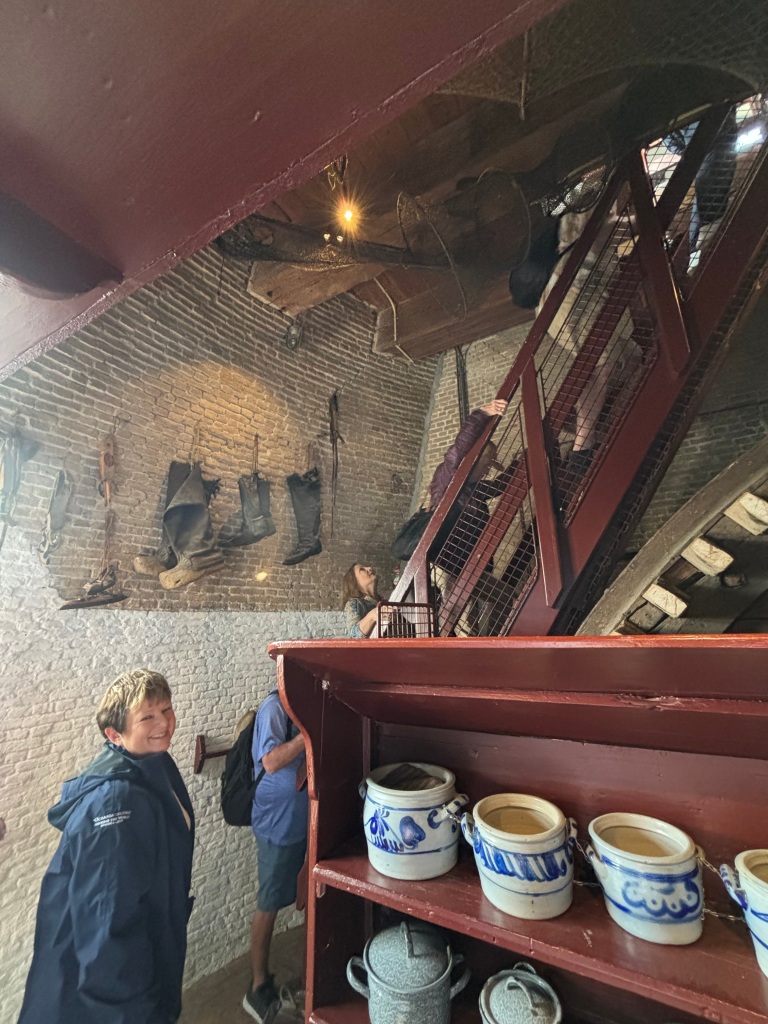


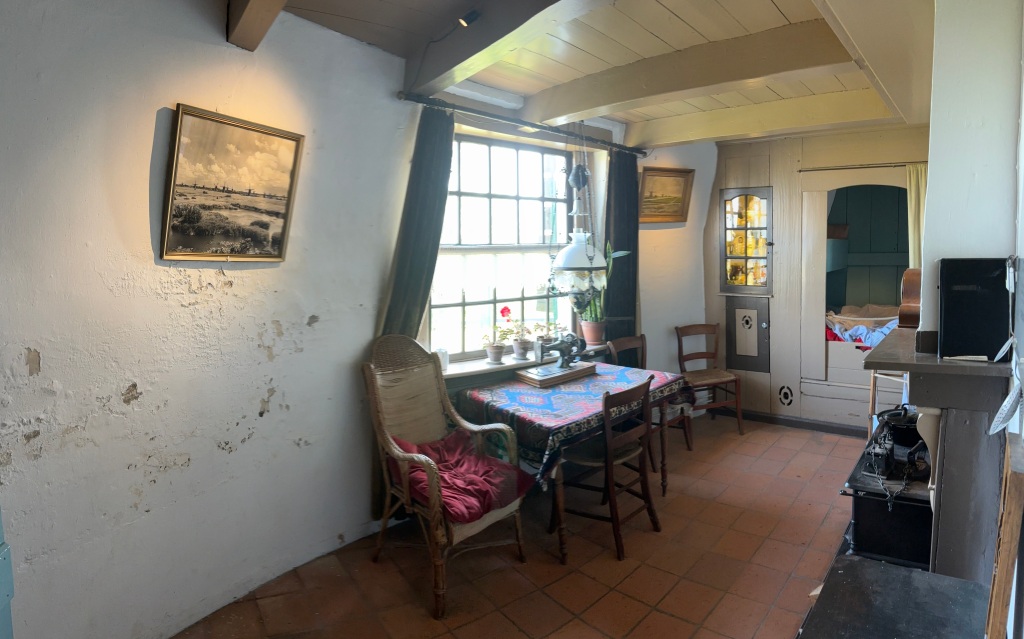
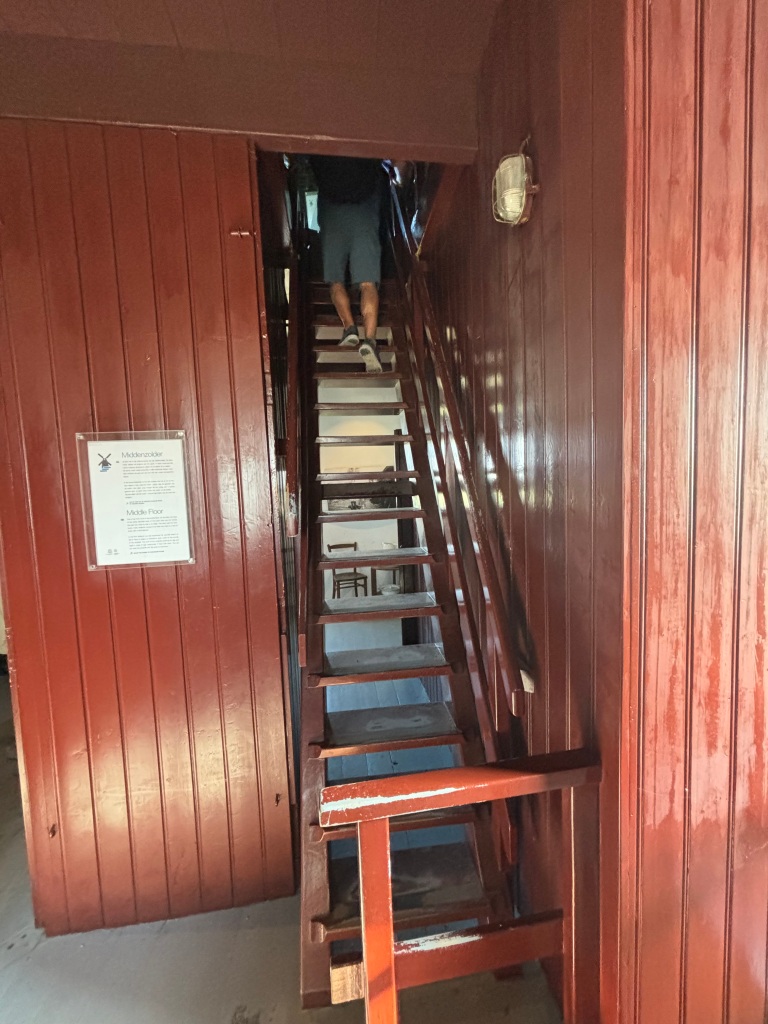
Can you imagine climbing those stairs 9 months pregnant or with a baby on your hip?!
The second floor is where the boys would sleep on one of two bunk beds, usually with multiple bodies in one bed. This wasn’t such a bad proposition in the winter given there was no heat.
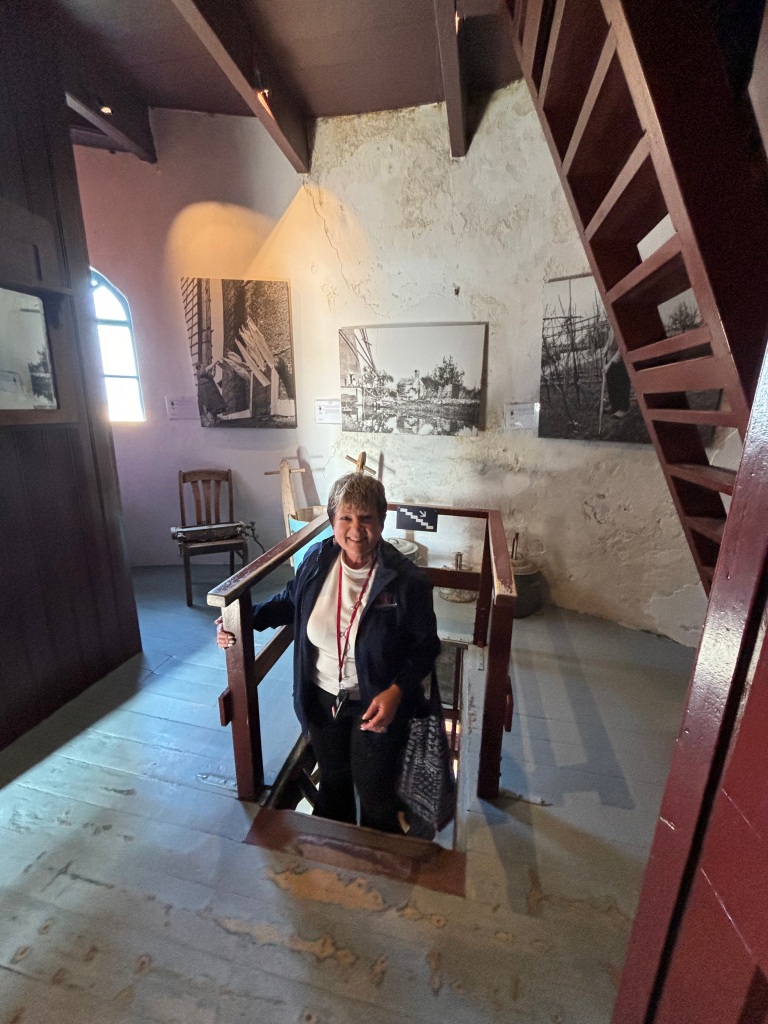
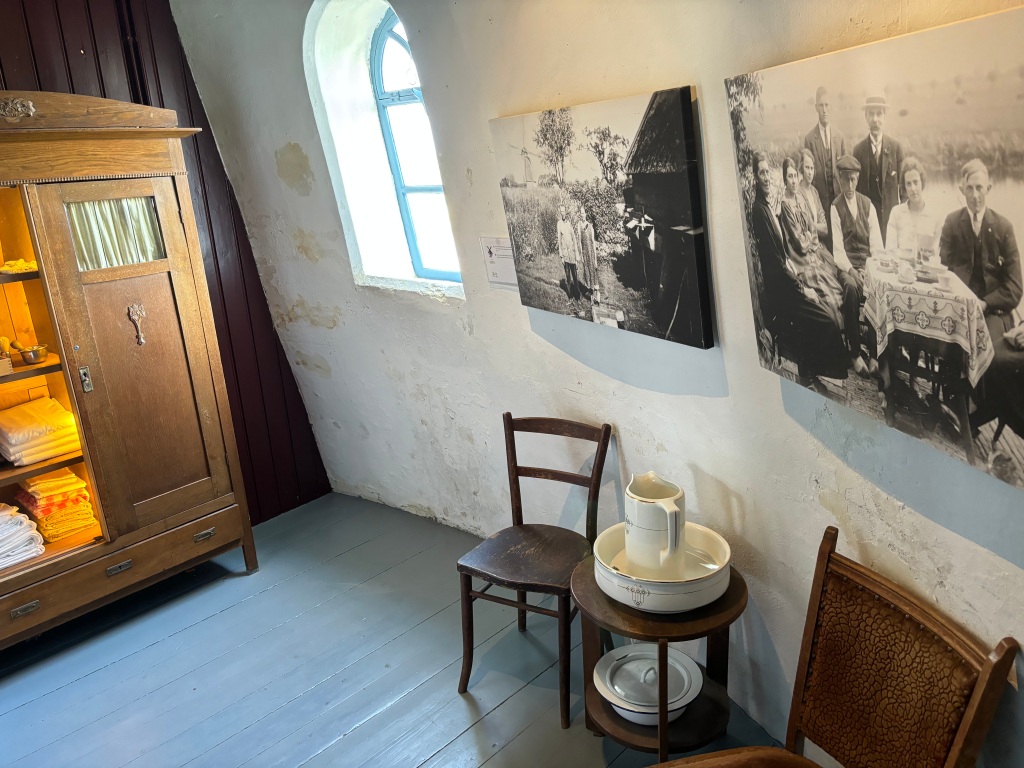
Not much room, but a beautiful view!
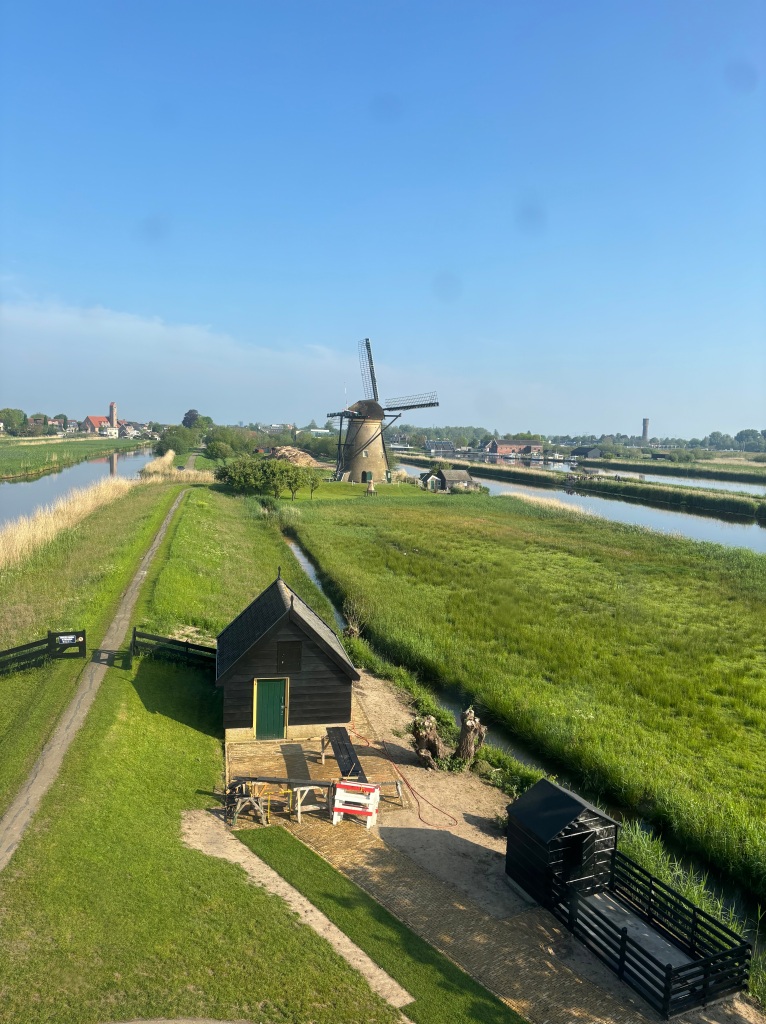
Laundry was done by hand in the furnace shed, and hung out to dry.
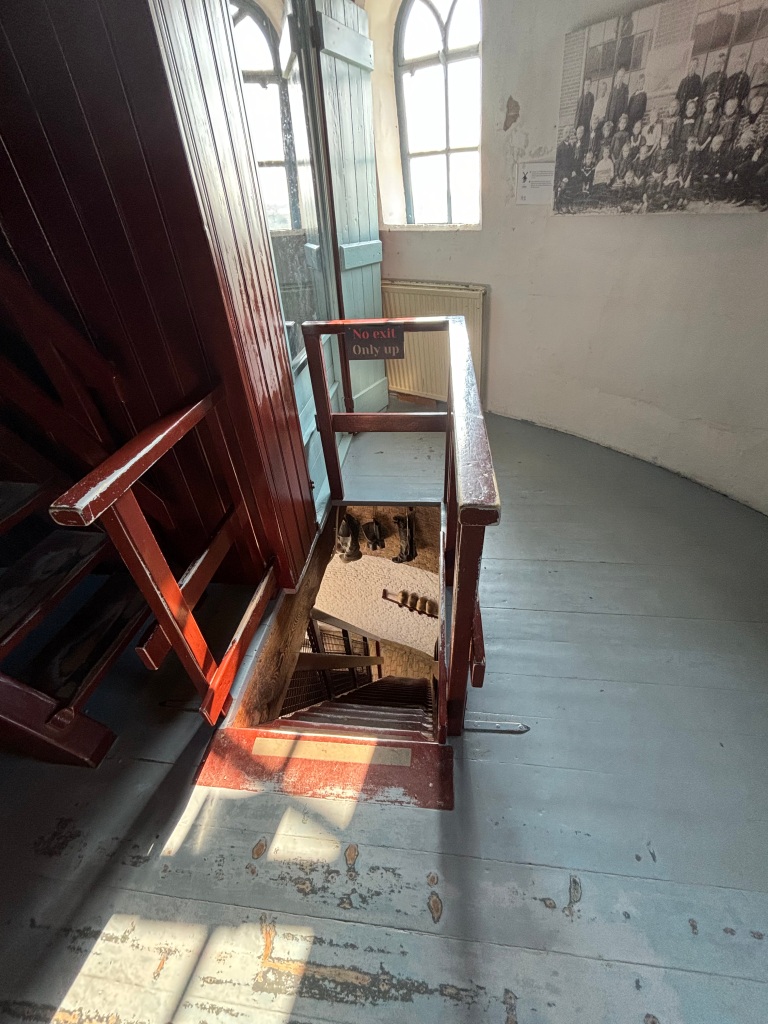
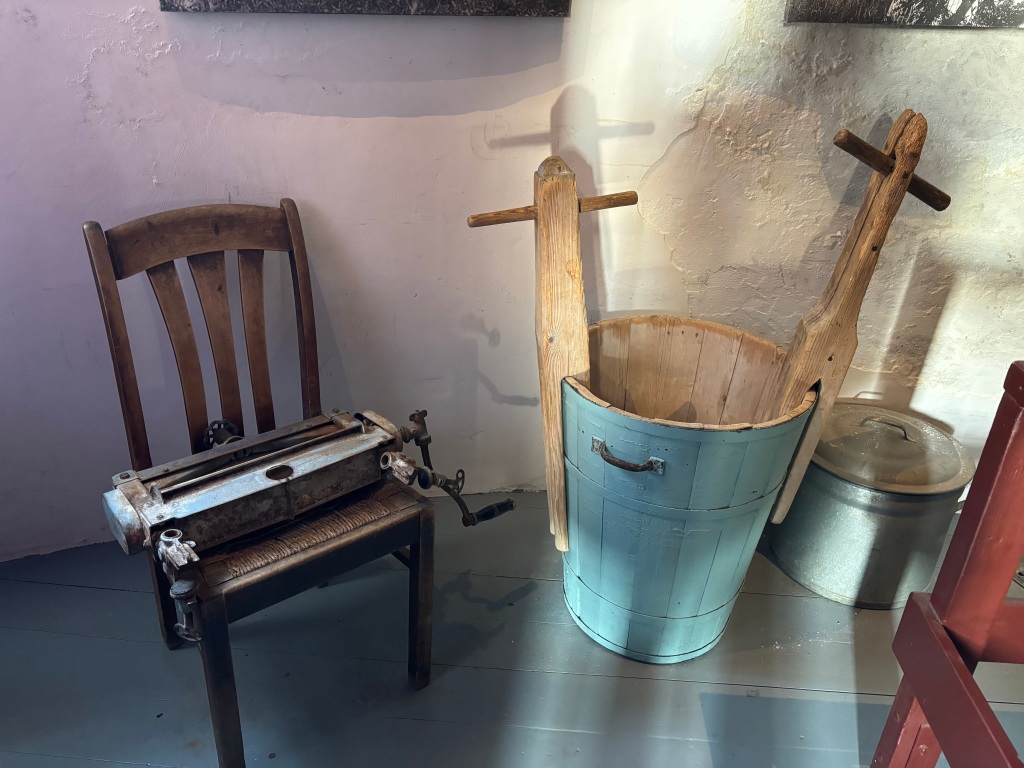
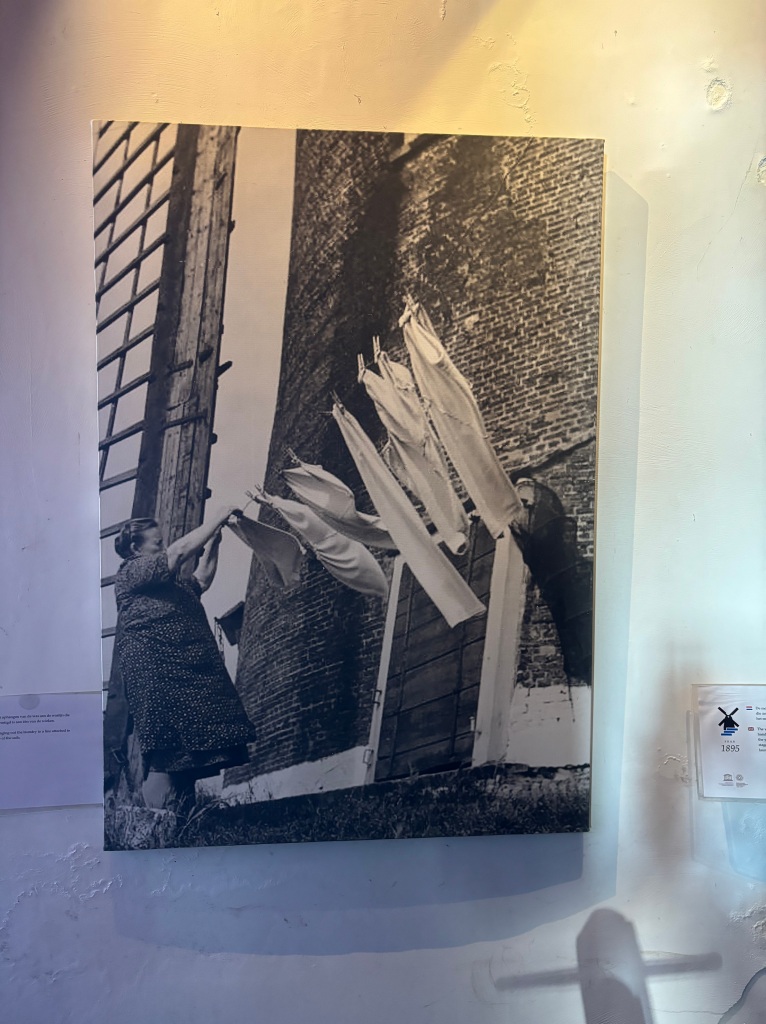
This is the biggest room in the house, serving as the living room, kitchen and hosting area. It was/is the one room in the house that is heated.

The smoke from the stove in the living room would go up and out through the cap in the mill, blackening the beams in the attic along the way. In 1909 a new floor was added to this windmill and a horizontal chimney was put in. There were exhausts on two sides of the windmill. If it got too windy either side could be closed off with a lid, leaving the other open so the smoke could still get out. This area was also their storage unit. It’s where they would put fruit from the garden, their fishing nets in the winter, and it’s where they would hang the hides of rabbits or other small animals to dry so they could sell them.
Sixteen of the 19 windmills are still used as homes. They’re inexpensive to rent – only 500 Euros/month (less than $550), but that may not be as good a deal as it sounds. One must have a Miller’s license, which takes 2 years and time as an apprentice to earn, there is no insulation or modern heating or cooling systems, so the interior can be extremely hot in the winter and warm in the summer, and in order to maintain government funding for the UNESCO site, the windmills must complete 60,000 rotations per year. The windmills average 164 rotations a day and make a lot of noise while doing it – you do the math.
The reason you have to have a Miller’s license to live in the windmill – and the reason they keep them operational – is that if there is ever an emergency you may be called on to operate it. This happened during WWII when there was a shortage of diesel and electricity and the pump houses couldn’t operate.
Following our tour of the windmill, our guide told us a little more about the area and how a windmill operates.
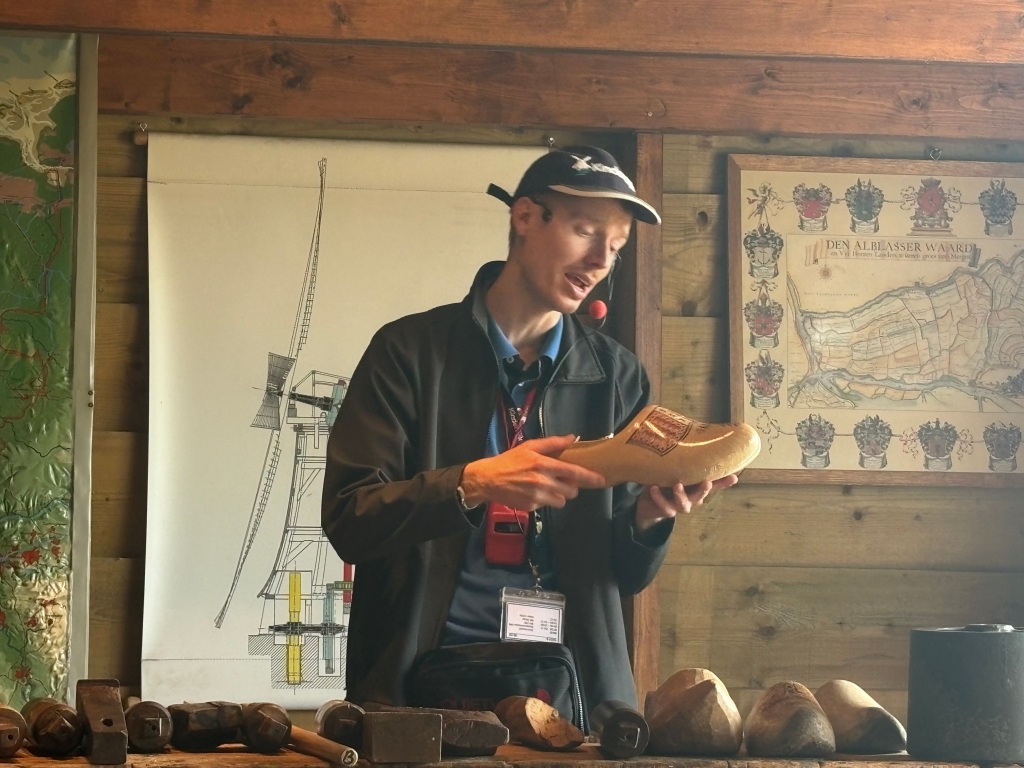
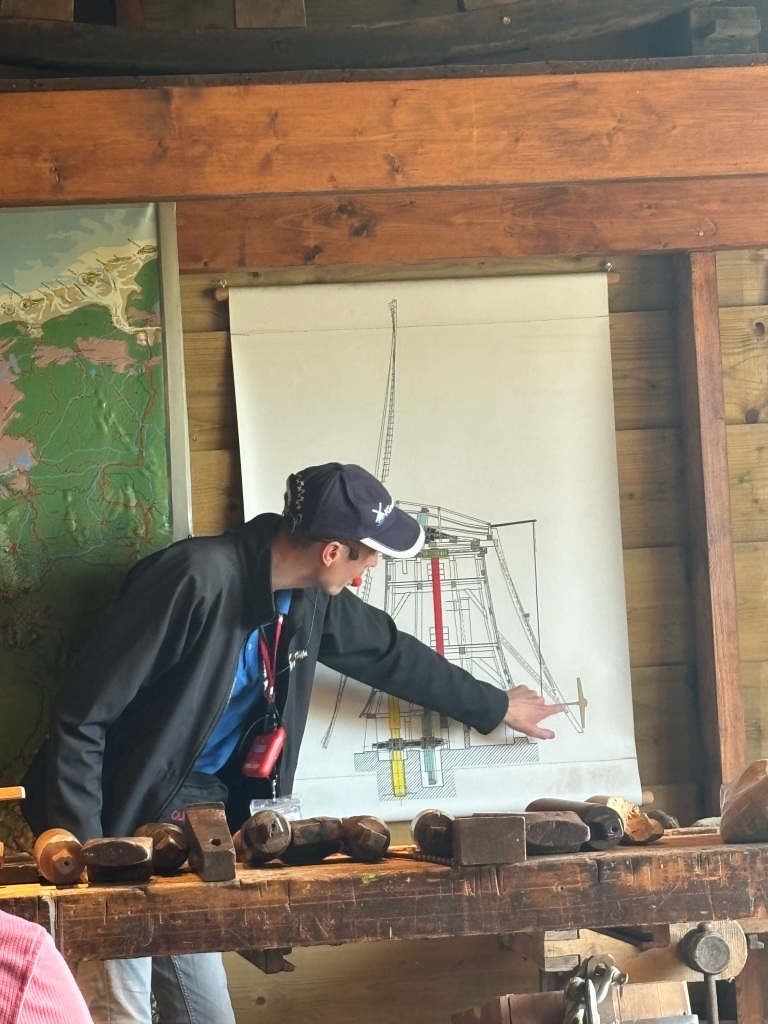
Do you why clogs were so useful? They’re easy to get on and off; they are well-insulated; the wood used to make them is pretty soft and comfortable; clogs don’t get stuck in the muck; and they’re easy to make, so people of little means didn’t have to buy them from a cobbler, they could make them themselves.
There’s a lot to the engineering of a windmill, but one of the simpler things for a layperson like me to explain is the use of canvas on its wingspan. A windmill needs wind too operate, but too little or too much and it can’t do its job. So, a canvas was created to help the Miller regulate the rotations of the windmill. There are three types of canvas, each designed for a different wind speed. Each morning the Miller would check the weather and decide which canvas to use; some maximized a slight wind; some buffered a strong wind so that the wings wouldn’t go too fast. Why is that important? Spinning wood on wood creates friction. Friction creates fire. Friction is the number two cause of windmill fires. Lightening is number 1.
Now, where did the name Kinderdijk come from? The St. Elizabeth Flood of 1441 killed more than 10,000 inhabitants of this area. Legend has it that when people from the surrounding area came to look for survivors all they found was a little baby in a cradle floating in the water near the dike with a cat jumping from one side to the other to keep it from sinking. Chdild – Kinder, Dike – dijk…
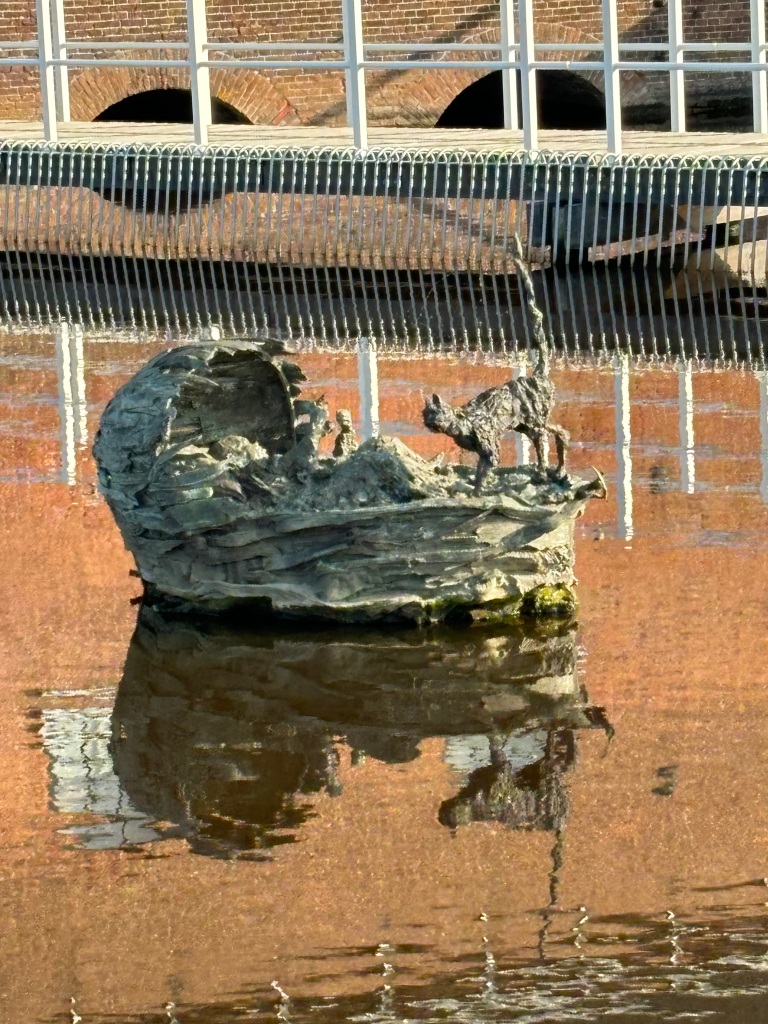
Not everyone agrees with that explanation. Others believe there is a more sinister story behind the name – the use of child labor (in a time when it was quite common) to build the dike. Or how about the king who died young and left all his land to be ruled by his 14 children? Or maybe it’s called Kinderdijk because of its small, childlike size? Whatever the reason, when the sun is shining, the air is warm, and the windmills aren’t running this small town of 900 residing next to a UNESCO World Heritage site seems like a pretty nice place to be.
